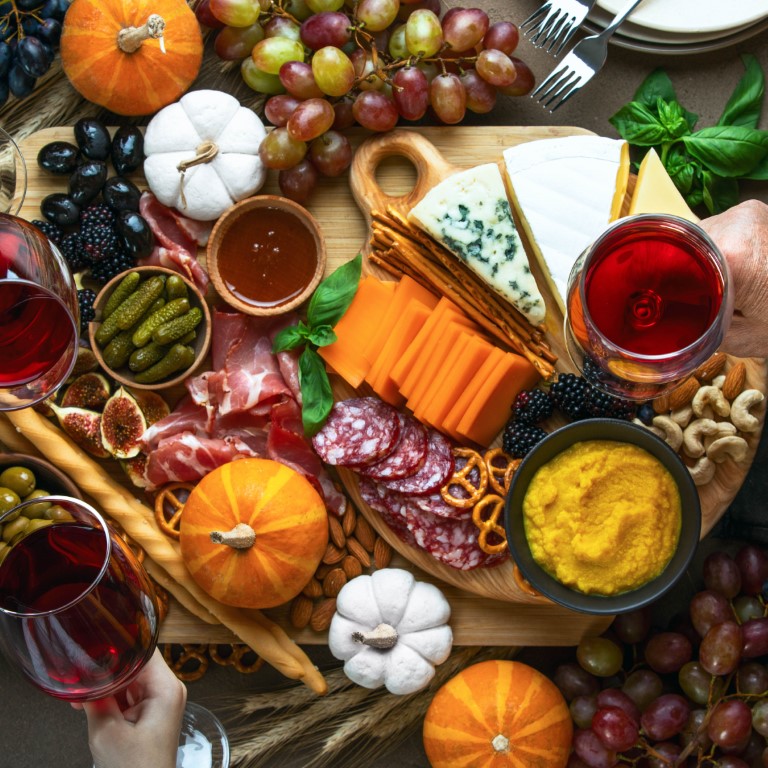Craft & Cork >> Winemaking

The Ultimate Wine Pairings for Your Cheese and Charcuterie Board
A well-curated cheese and charcuterie board is the epitome of elegance and simplicity, perfect for any gathering. Whether you’re hosting an intimate dinner party or enjoying a casual night in, pairing the right wines with your board can elevate the experience and impress your guests. Here’s a guide to the best wine matches for your cheese and charcuterie board, with recommendations that are sure to appeal to a broad range of palates.
1. Sparkling Wine: A Crowd-Pleaser
Varietals & Styles: Champagne, Prosecco, Cava, Brut Rosé
There’s a reason sparkling wine is a go-to for celebrations—its effervescence, acidity, and versatility make it an excellent match for a wide variety of foods, including cheese and charcuterie. The bubbles help cleanse the palate, making each bite of creamy cheese or rich charcuterie feel as fresh as the first. Sparkling wines like Champagne, Prosecco, and Cava have a bright acidity that complements the saltiness of cured meats and balances the richness of soft cheeses like Brie or Camembert.
Why it works: The high acidity in sparkling wine cuts through the fat in cheeses and charcuterie, while the bubbles provide a refreshing contrast to the creamy textures and savory flavors. A Brut Rosé, with its added fruitiness, pairs particularly well with fruit-based accompaniments like fig jam or fresh berries.
2. Sauvignon Blanc: Crisp and Refreshing
Varietals & Styles: New Zealand Sauvignon Blanc, Sancerre, California Sauvignon Blanc
For a white wine option that pairs beautifully with a range of cheeses and charcuterie, Sauvignon Blanc is a top pick. Known for its crisp acidity and vibrant flavors of citrus, green apple, and herbs, Sauvignon Blanc pairs particularly well with tangy goat cheeses, fresh mozzarella, and salty prosciutto. The wine’s herbal notes can also complement herb-infused cheeses and charcuterie seasoned with rosemary or thyme.
Why it works: The zesty acidity of Sauvignon Blanc cuts through the creaminess of softer cheeses and enhances the freshness of milder cheeses. Its citrus and green flavors contrast nicely with the richness of charcuterie, creating a balanced and refreshing pairing.
3. Pinot Noir: The Versatile Red
Varietals & Styles: Burgundy, Oregon Pinot Noir, California Pinot Noir
Pinot Noir is a versatile red wine that’s a safe bet for almost any cheese and charcuterie board. Its light to medium body, bright acidity, and flavors of red fruit, such as cherry and raspberry, make it an excellent match for both milder and more robust cheeses. Pair Pinot Noir with semi-hard cheeses like Gruyère, aged Gouda, or Havarti, as well as cured meats like salami or prosciutto.
Why it works: Pinot Noir’s acidity and fruit-forward profile complement the tanginess of semi-hard cheeses and the saltiness of charcuterie. Its subtle earthiness can also enhance the flavors of aged cheeses and cured meats, making it a well-rounded choice for your board.
4. Rosé: A Versatile All-Rounder
Varietals & Styles: Provence Rosé, Grenache Rosé, Pinot Noir Rosé
Rosé’s growing popularity is no surprise, given its versatility and broad appeal. A dry Rosé, particularly those from Provence or made from Grenache, offers a perfect balance of acidity, fruitiness, and light body. This makes it an excellent pairing for a wide range of cheeses, from creamy Brie to nutty Manchego, and charcuterie like mild sausages and smoked ham.
Why it works: The acidity in Rosé matches well with both the richness of cheeses and the saltiness of charcuterie. Its fruity notes, often reminiscent of strawberries, raspberries, and citrus, provide a refreshing contrast to savory flavors, making it a crowd-pleaser that pairs well with a variety of board components.
5. Cabernet Sauvignon: Bold and Rich
Varietals & Styles: Napa Valley Cabernet, Bordeaux, Chilean Cabernet
For those who prefer a bolder red wine, Cabernet Sauvignon is a great choice, especially if your cheese and charcuterie board includes aged, hard cheeses like Parmigiano-Reggiano, Cheddar, or Pecorino. The tannins in Cabernet Sauvignon pair beautifully with the dense, crumbly texture of these cheeses, while the wine’s dark fruit flavors and hints of spice complement the robust flavors of cured meats like chorizo or peppered salami.
Why it works: The structured tannins in Cabernet Sauvignon help to balance the richness of hard cheeses and the spice of more intensely flavored charcuterie. Its bold flavor profile ensures that it stands up well to stronger, more aged cheeses, making it a great choice for those who love a rich, full-bodied wine.
If You Can Only Choose One Wine…
If you’re looking for a single wine to serve with your cheese and charcuterie board, Rosé is the way to go. Its versatility, balanced acidity, and fruit-forward profile make it a perfect match for a wide range of cheeses and charcuterie. Whether you’re serving creamy Brie, nutty Manchego, or savory prosciutto, Rosé will complement the flavors without overpowering them. It’s a wine that appeals to both red and white wine lovers, making it a crowd-pleasing choice that ensures everyone at your gathering finds something they love in the glass.
Why Rosé works: Rosé’s refreshing acidity cuts through the richness of cheeses while its subtle fruitiness enhances the savory and salty notes of charcuterie. It’s the perfect all-rounder that brings out the best in each component of your board.
Conclusion
Whether you’re a fan of sparkling wines, crisp whites, versatile reds, or bold full-bodied choices, there’s a perfect wine pairing for every cheese and charcuterie board. However, if you’re looking for a single bottle that’s guaranteed to please everyone at your gathering, Rosé is your best bet. So next time you’re putting together a cheese and charcuterie spread, reach for one of these wine varietals—or go with the always-reliable Rosé—to ensure your pairing is a hit.


Recent Comments